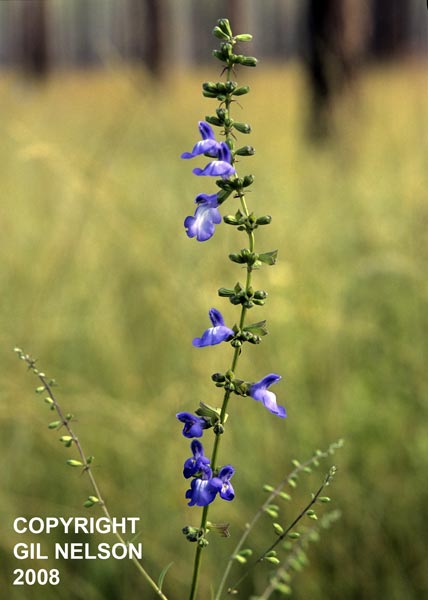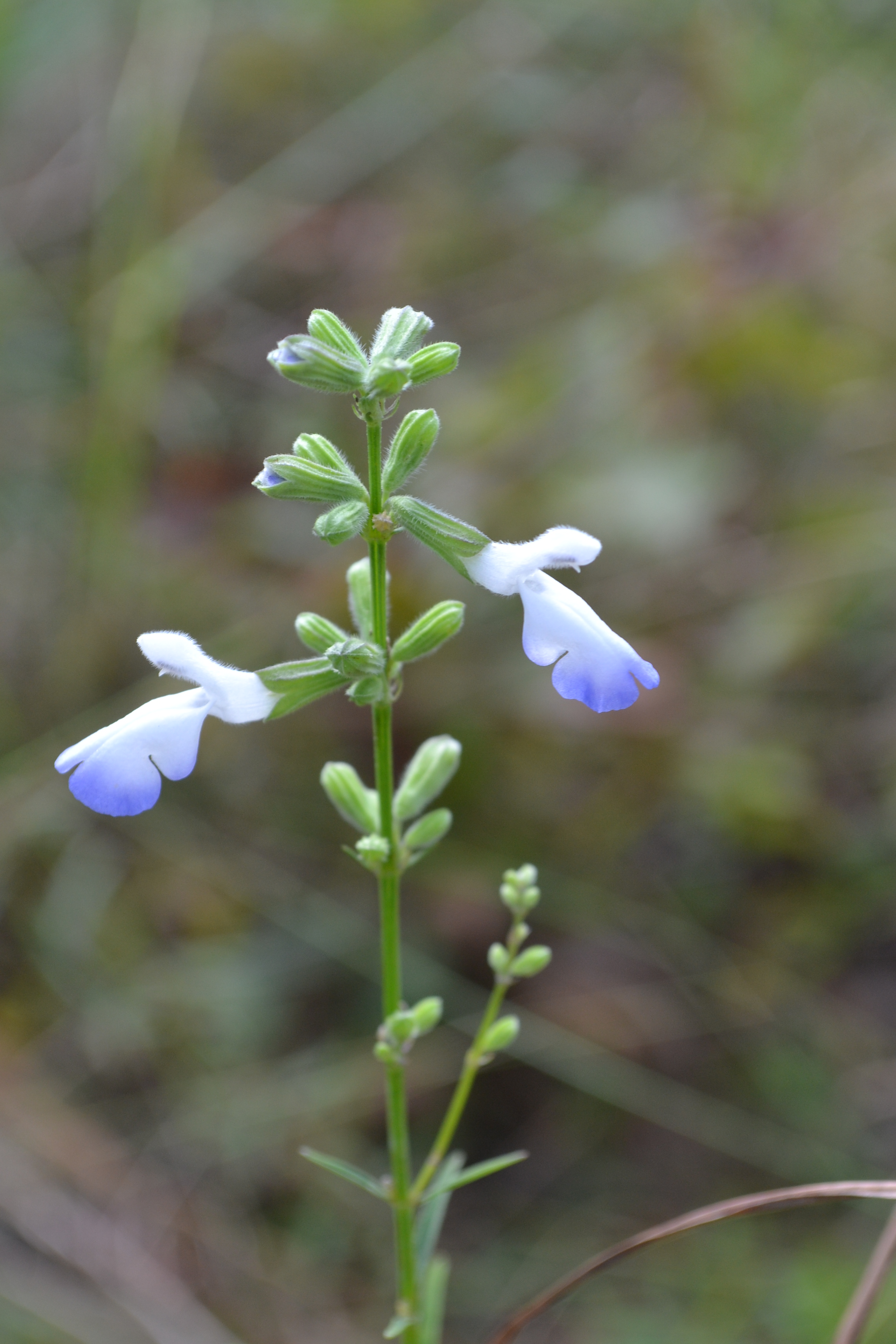Salvia azurea
| Salvia azurea | |
|---|---|

| |
| Photo taken by Gil Nelson | |
| Scientific classification | |
| Kingdom: | Plantae |
| Division: | Magnoliophyta – Flowering plants |
| Class: | Magnoliopsida – Dicotyledons |
| Order: | Lamiales |
| Family: | Lamiaceae ⁄ Labiatae |
| Genus: | Salvia |
| Species: | S. azurea |
| Binomial name | |
| Salvia azurea Michx. ex Lam. | |

| |
| Natural range of Salvia azurea from USDA NRCS Plants Database. | |
Common names: Azure blue sage, Azure sage
Contents
Taxonomic notes
Synonym: none
Variety: Salvia azurea Michaux ex Lamarck var. grandiflora Bentham
Description
Azurea means "sky blue" referring to the color of the flower; however, some individuals may have white colored flowers. [1] The corolla is typically white or white with blue tint near the petal tips in northern Florida and southern Georgia (KMR).
"Perennial, [or annual] herbs [or shrubs], with erect to ascending quadrangular stems. Leaves toothed or lobed. Inflorescent a thryse, cymules 3-15 flowered. Calyx zygomorphic, 2-lipped; corolla zygomorphic, 2-lipped, blue to violet or red, rarely white. Fertile stamens 2, exserted, sterile stamens present or absent; stigma unequally 2-cleft, exserted." [2]
"Stems 0.7-1.5 m tall, 1-several from a crown, leafy simple or branched above, basal leaves absent. Leaves linear, narrowly elliptic to elliptic-lanceolate, 4-8.5 cm long, 0.3-3 cm wide, acute to obtuse, entire to crenate-serrate, base cuneate to attenuate, petioles obscured by decurrent blade. Calyx 5-8 mm long, upper lip entire, lower 2-toothed, teeth acute, not bristle tipped; corolla blue, 1.3-1.5 cm long; the 2 locules of each anther side by side. Mericarps olive-brown, resinous-glandular, dull, ellipsoid to obovoid, 2.3-2.8 mm long." [2]
Distribution
In Kansas, it is found abundantly as a native tallgrass prairie perennial. [3]
Ecology
Habitat
In the Coastal Plain in Florida and Georgia, S. azurea can be found in upland pinewoods, burned longleaf pine habitats, sandhills, sandy slopes, flatwoods, pine-oak-hickory woods, and mesic longleaf pine-wiregrass woods. [4] [1] it can also grow in open slopes of power line corridors. It has been recorded to grow in moist sandy loam. [4] Associated species include longleaf pine, oak species, and wiregrass. [4]
In south Georgia upland pines, it is restricted to native groundcover. [5]
Phenology
It blooms from September to November. [1]
Kevin Robertson has observed this species flower within three months of burning. KMR
Use by animals
Studies conducted with animals
In general (after experimenting the effects of bison and cattle on growth, reproduction, and abundances of Salvia azurea and other perennials), bison resulted in greater plant biomass and height, and lower number of stems per plant relative to plants in ungrazed sites, whereas cattle resulted in lower plant biomass, plant height, and number of stems per plant. [3]
Conservation and management
Cultivation and restoration
Photo Gallery
References and notes
- ↑ 1.0 1.1 1.2 Nelson, Gil. Atlantic Coastal Plain Wildflowers: A Field Guide to the Wildflowers of the Coastal Regions of Virginia, North Carolina, South Carolina, Georgia, and Northeastern Florida. Guilford, CT: FalconGuide, 2006. 54. Print.
- ↑ 2.0 2.1 Radford, Albert E., Harry E. Ahles, and C. Ritchie Bell. Manual of the Vascular Flora of the Carolinas. 1964, 1968. The University of North Carolina Press. 913. Print.
- ↑ 3.0 3.1 Damhoureyeh, S. A. and D. C. Hartnett. 1997. Effects of bison and cattle on growth, reproduction, and abundances of five tallgrass prairie forbs. American Journal of Botany 84:1719-1728.
- ↑ 4.0 4.1 4.2 Florida State University Robert K. Godfrey Herbarium database. URL: http://herbarium.bio.fsu.edu. Last accessed: July 2015. Collectors: Roy Komarek, R. A. Norris, Rodie White, Andre F. Clewell, Loran C. Anderson, Travis MacClendon, Karen MacClendon. States and Counties: Florida: Calhoun. Georgia: Decatur, Grady, Thomas. Compiled by Tall Timbers Research Station and Land Conservancy.
- ↑ Ostertag, T.E., and K.M. Robertson. 2007. A comparison of native versus old-field vegetation in upland pinelands managed with frequent fire, South Georgia, USA. Pages 109–120 in R.E. Masters and K.E.M. Galley (eds.). Proceedings of the 23rd Tall Timbers Fire Ecology Conference: Fire in Grassland and Shrubland Ecosystems.
